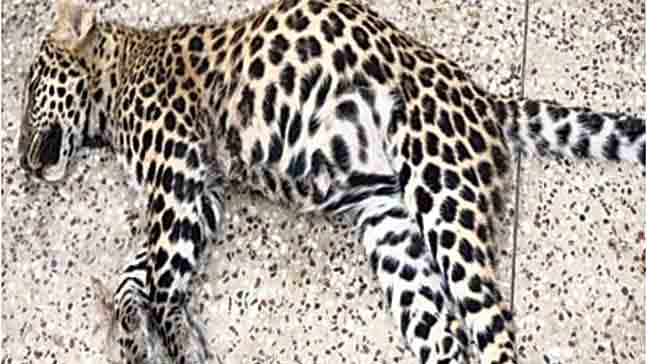Veterinary scientists have detected the coronavirus in the lung and brain tissues of a wild leopard cub in Uttar Pradesh, the first time the virus has been found in a free-ranging wild feline species.
The discovery was made by researchers at the Indian Veterinary Research Institute in Izzatnagar, Bareilly, on a male leopard cub found dead in mid-October last year near Bijnor.
Scientists had earlier documented infection by SARS-CoV-2, the virus that causes Covid-19, in captive lions
and tigers as well as in wild mink and deer. But the IVRI scientists say the infected leopard is the first sign of the virus in wild feline species.
“All the earlier SARS-CoV-2 infections in feline species were believed to be the result of spill-overs — the cats got the virus from infected humans around them,” said Gaurav Sharma, an IVRI scientist who examined the leopard’s carcass and tissues.
The forest area in which the cub was found is close to villages, and leopards are known to be “less shy” than other large wild cats, Sharma said. “It is possible that this leopard too got the virus from infected humans, but we can’t say how.”
Teeth marks and signs of haemorrhaging wounds on the leopard cub’s neck and skull indicate that it had died following a fight with other animals. Tissue analysis in the lab revealed SARS-CoV-2 in the cub’s brain, spleen, lymph nodes and lungs.
The viral genome sequence from the leopard shows a strong resemblance to the sequence of the delta variant, which had fuelled India’s second wave last year while simultaneously spreading across the world.
The origin of SARS-CoV-2 remains unresolved, although studies have suggested that its ancestral species exist in bats.
Animal experiments have shown that the virus can infect primates, ferrets, rabbits, bats, cats, dogs, lions and tigers.
Scientists at the US department of agriculture last year reported finding evidence of SARS-CoV-2 infection in free-ranging, wild white-tailed deer in the state of Ohio. The virus matched the strains circulating among patients in Ohio at the time.
The presence of the virus in wild deer raises the idea that “we might actually have established a new host outside humans”, said Andrew Bowman, associate professor of veterinary preventive medicine at the Ohio State University who led the deer study.
“If they (deer) can maintain it, we have a new potential source of SARS-CoV-2 coming to humans,” Bowman had said in a media release in December. “It could complicate future mitigation and control plans for Covid-19.”
The discovery of SARS-CoV-2 in the leopard has stirred similar concerns among Sharma and his colleagues, who say their findings underline the need to intensify the screening of wild feline species.
“It is significant that the leopard cub was infected in October at a time the country’s second wave had receded and the infection’s prevalence level in humans would have been lower than earlier in the year,” Sharma said. “This adds to the mystery — how did it get the infection?”











